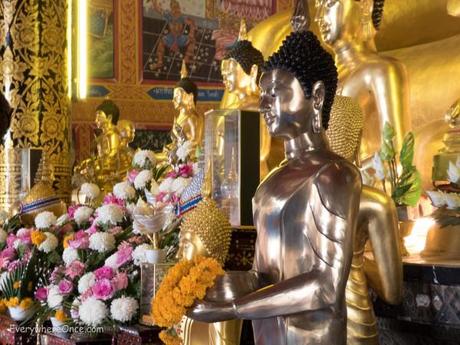
Buddha Statues at Wat Jed Yod, Chiang Rai Thailand
We choose Chiang Rai as a starting point for our Asian travels because it seemed like a low-key way to ease into Thailand. This small city in the north didn’t disappoint.
The thing that pleased us most here were the people we met, who were uniformly friendly and helpful. From the grandmotherly woman who pointed us to the correct bus without being asked to every shopkeeper and restaurateur who patiently worked with us to bridge our gaping language barriers. It’s quite the contrast with our introduction to Paris, where our first waitress walked off in a huff of frustration because we had difficulty placing our order in French.
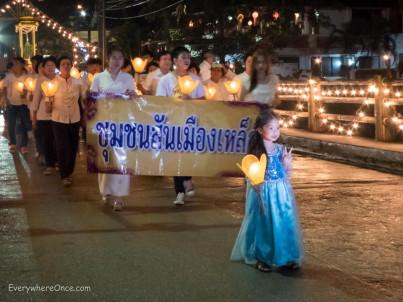
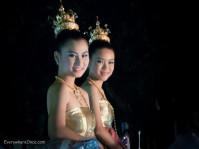
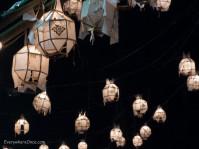
Loy Krathong Festival, Chiang Rai, Thailand
We were also pleasantly surprised by the fact that not a single person here tried to sell us something we did not want. We were never swarmed by hawkers pushing trinkets, and we were never barked at by touts selling tours. Not even our guesthouse owner tried to sell us the tours he offered, preferring instead to give us handwritten directions to those same places using public transportation.
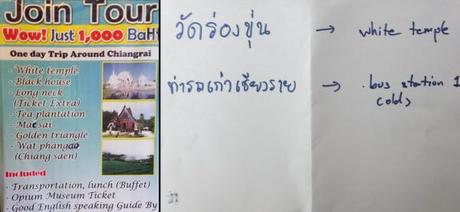
A tour poster and our handwritten self guided tour instructions
As for the town itself, it lacks anything that might be described as a major tourist attraction and isn’t especially pretty. Mostly it has the well worn look of a place that is doing a lot with fairly little. Except for the temples, of which there are plenty, the architecture is best described as basic and functional. There is little in the way of flourishes and a lot in the way of bare concrete and corrugated steel.
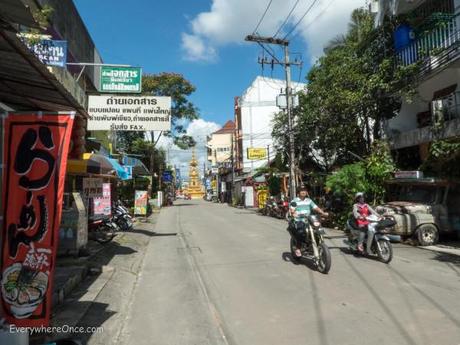
And yet “poor” isn’t an adjective I’d use to describe this place. If I didn’t know it already I wouldn’t guess from looking around that Thailand’s per-capita income is a mere tenth of that enjoyed in the U.S. To say we saw fewer panhandlers here than we did in San Francisco or less blight than in New Orleans is more than a mere understatement because we saw absolutely none of either in Chiang Rai.
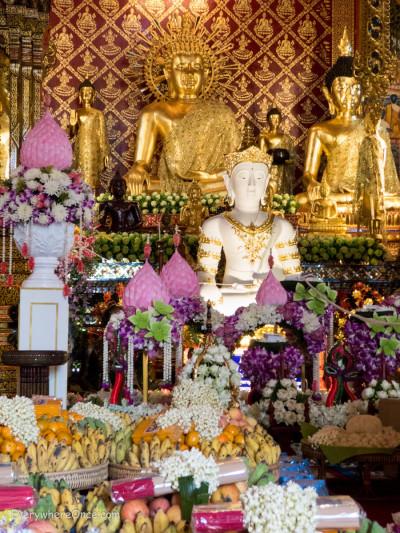
Buddha Statues at Wat Phra Singha, Chiang Rai Thailand
The temples, meanwhile, are marked by opulence. Gilded Buddhas loom large in brightly painted prayer halls. Elaborate freezes adorn the walls and all manner of fierce creatures stand guard to protect the faithful.
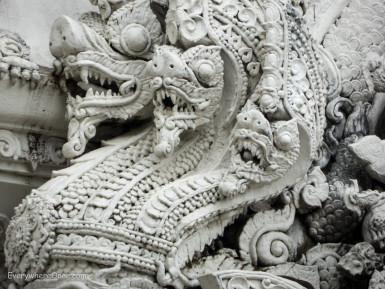
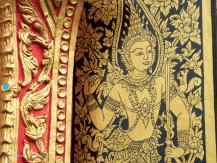
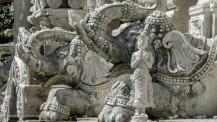
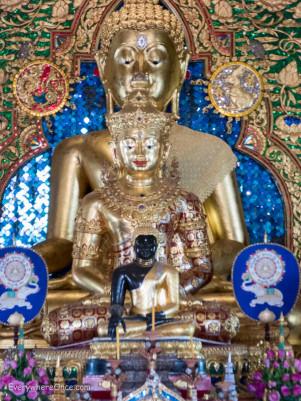
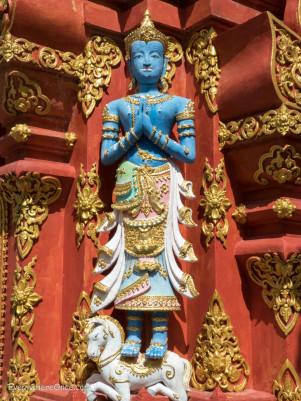
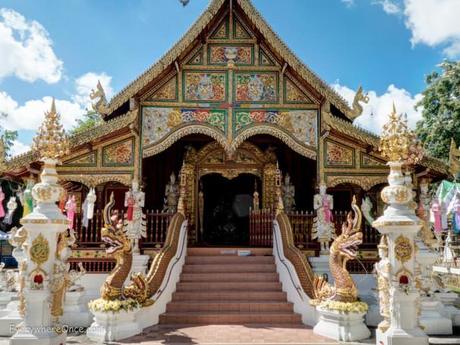
There are at least nine Buddhist temples scattered throughout the downtown area. The most famous of these is Wat Phra Kaew, also sometimes known as the Temple of the Emerald Buddha due to the “perfectly carved” statue that was rediscovered by chance there in 1434. The original Emerald Buddha has long ago taken up residence in Bangkok with a replica now serving Chiang Rai.

Emerald Buddha at Wat Phra Kaew
Most of Chiang Rai’s temples are within an easy walk or bike ride from the city center. In fact, we found getting around the area to be quite simple with frequent bus service to outlying areas and plenty of people willing to help point you in the right direction.
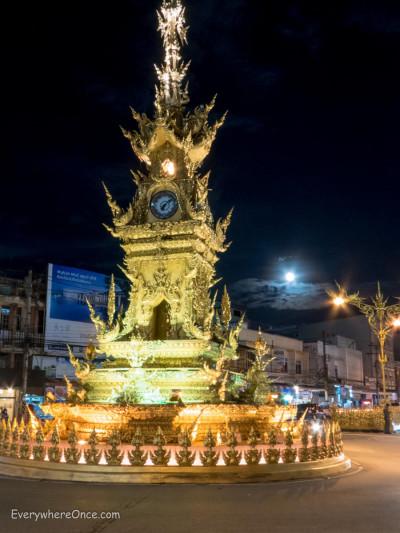
Chiang Rai clocktower
The city is also littered with too many terrific restaurants, noodle shops, and food carts to count. We had no problem eating well here and usually for less than $2 per person.
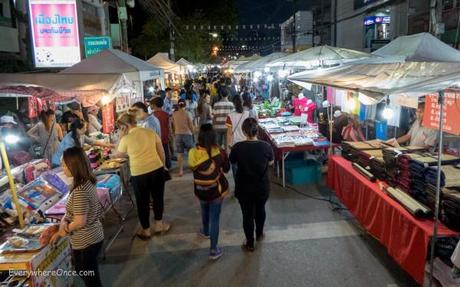
Chiang Rai night market
If you go: We stayed at the Baan Jaru guesthouse, which we couldn’t recommend more highly. It’s not your cheapest option in the city, but we were completely happy with our stay. Baan Jaru is well located within an easy walk of all the local attractions and the bus station. It’s immaculately clean. The wifi is fast. And best of all, the proprietor, Toddy, is one of the most helpful and friendly hosts we’ve come across on our travels.

